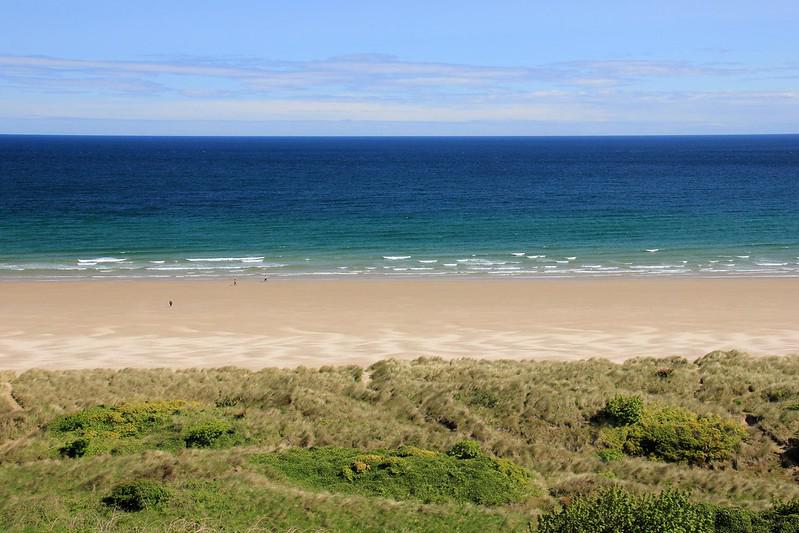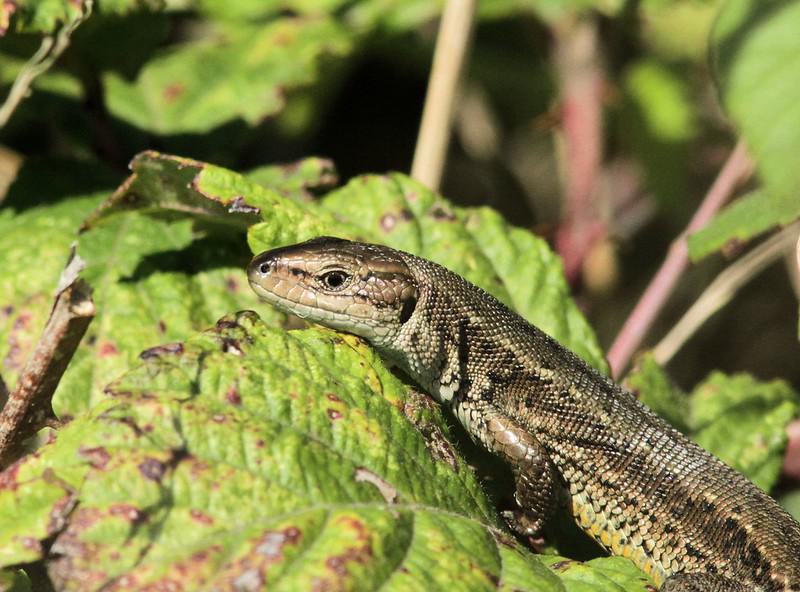Diverse Dune Systems
The furthest north of the English counties, Northumberland has over 40 miles of coastline to its name and is home to some of the finest beaches in the country. Well known for its rugged cliffs, remote headlands and coastal views, the area is recognised as an Area of Outstanding Natural Beauty. Much of the Northumberland coast is important for wildlife and it has extensive areas which are under the management of conservation organisations, to ensure that the many ecosystems are preserved to the best degree possible. One such area is Annstead Dunes – a nature reserve that covers about 50 acres of land between the small coastal towns of Seahouses and Beadnell.

Annstead dunes, as the name might suggest, consists of extensive areas of sand dunes that lie at the rear of a lovely, sandy beach. The foredunes vary in height and are mostly devoid of vegetation, whereas the fixed dunes further inland are rich in plant life, often boasting many colourful wildflowers during the summer months. The area is ideal for walking. Like much of Northumberland, the landscape takes on a very remote feel and tends to attract fewer tourists than other regions of England, meaning you can enjoy the fabulous sights that are on offer in peace and quiet.
Sunbathing Lizards
Annstead Dunes Nature Reserve is home to many interesting species, however it’s an especially good place for Common Lizards. These reptiles might be common by name, but they can be quite tricky to actually see. Being cold-blooded animals, they can’t survive being out in cold weather and so hibernate every winter, disappearing into underground burrows until the spring. Even then, the Common Lizard is always partial to some warmth and spends large parts of the day sunbathing on warm rocks or secluded areas of vegetation. This is often the best time to see them. The species is also known as the Viviparous Lizard, in reference to the fact that they give birth to live young, instead of laying eggs like some other reptile species.

Common Lizards can be found in many different habitats, however their preferred ecosystems are regions of grassland and sandy heath. The sand dunes at Annstead are therefore ideal for them and the nature reserve holds a healthy population all year round. If you spot a lizard while out and about in the Dunes, try and keep as still as possible, as they are usually shy animals who will scamper away if disturbed. Top tip for spotting Common Lizards at Annstead Dunes: keep your eyes peeled for creatures scurrying around amongst the dune vegetation.
Seabird Colonies
There are many other wildlife highlights to see around the Annstead Dunes. The entire Northumberland coast is a birdwatcher’s paradise, with some of the best opportunities in Europe to see waders and wildfowl. It’s not bad for nesting seabird colonies either, which usually peak in numbers around May and June. The Farne Islands are not too far offshore, and as these are a protected seabird sanctuary, many birds drift across the water towards the coast. At Annstead Dunes, the most notable species to see are Redshank, Ringed Plover and Sanderling.
The beach is also a particularly good place for seeing seals and dolphins. Grey Seals can be found on the coast in large numbers, with Northumberland being an important breeding area for the species. And while dolphins are rarer sights, you might be lucky to spot them passing the coast. It pays to look out for the diverse flora in the area also. The Northumberland Wildlife Trust has fenced off areas of the nature reserve at Annstead to allow them to be grazed by Exmoor Ponies. The ponies themselves can be beautiful to see, but their purpose is to keep the dominant plant species in check so that wildflowers and rare species can thrive. Annstead Dunes is a special place on the Northumberland coast and is well worth a visit, being particularly good for beach-lovers and those interested in seeing wildlife.
